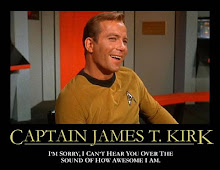Don DeLillo’s novel White Noise is hailed as one of the greatest postmodern works of all time and is one of the greatest books of the 20th century. However, why did DeLillo call his novel white noise? What does it even mean? The dictionary defines white noise as, “a constant background noise; especially: one that drowns out other sounds; meaningless or distracting commotion, hubbub, or chatter” (White Noise, 2009). With this definition in mind, it is easy to see what DeLillo meant when he called his novel White Noise. Don DeLillo meant that the technology and life in America are a background noise that drowns out what is really going on in our world.
The first example we see of this in the novel is on the very first page. DeLillo describes how a group of college students arrive with an ungodly amount of stuff loaded on their cars. “The roofs of the station wagons were loaded down with carefully secured suitcases full of light and heavy clothing; with boxes of blankets, boots and shoes, stationery and books, sheets, pillows, quilts; with rolled-up rugs and sleeping bags; with bicycles, skies, rucksacks, English and Western saddles, inflated rafts” (DeLillo, 1999). This shows the mountains of stuff that the kids bring with them; most of it completely useless. The American underlying white noise of “buy more stuff, buy more stuff” is made evident here. These kids own things that they will most likely never use again, but own none the less out of some unknown need.
A second example of this definition of white noise is on page 51 of the novel. Murray is talking to the narrator, Jack, about television and how, in a way, it is the essence of white noise. “TV offers incredible amounts of psychic data. It opens ancient memories of world birth; it welcomes us into the grid, the network of little buzzing dots that make up the picture pattern. There is light, there is sound. I ask my students, ‘What more do you want?’ Look at the wealth of data concealed in the grid, in the bright packaging, the jingles, the slice of life commercials, the products hurtling out of darkness, the coded messages and endless repetitions, like chants, like mantras, ‘Coke is it, Coke is it, Coke is it.’ The medium practically overflows with sacred formulas if we can remember how to respond innocently and get past our irritation, weariness, and disgust” (DeLillo, 1999). Murray is basically saying that without us knowing it, things like TV or computers will run our thoughts if we allow them. Just 30 minutes and one commercial could have you buying something you don’t really want or craving some food you don’t really need to be eating.
In conclusion, White Noise can be interpreted as a kind of warning against letting these types of technologies run our lives. When we allow technology to become the background noise of our lives, it can influence us without us even knowing it. I believe that this was Don DeLillo’s purpose.
Works Cited
DeLillo, D. (1999). White Noise. New York, New York: Penguin Books.
White Noise. (2009). Retrieved from Merriam-Webster Online Dictionary: http://www.merriam-webster.com/dictionary/white+noise
Subscribe to:
Post Comments (Atom)

No comments:
Post a Comment